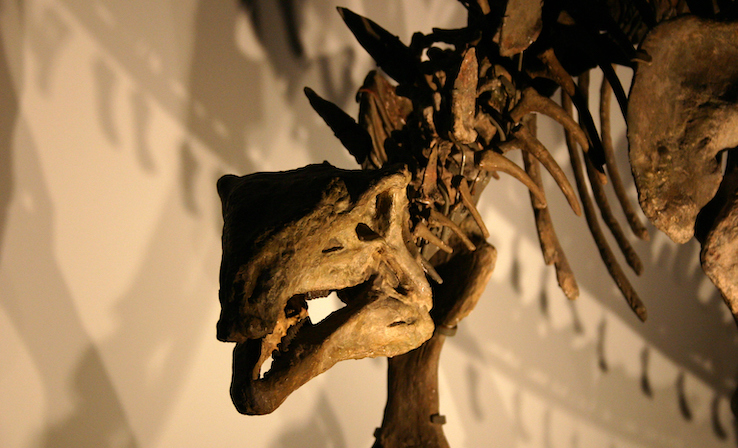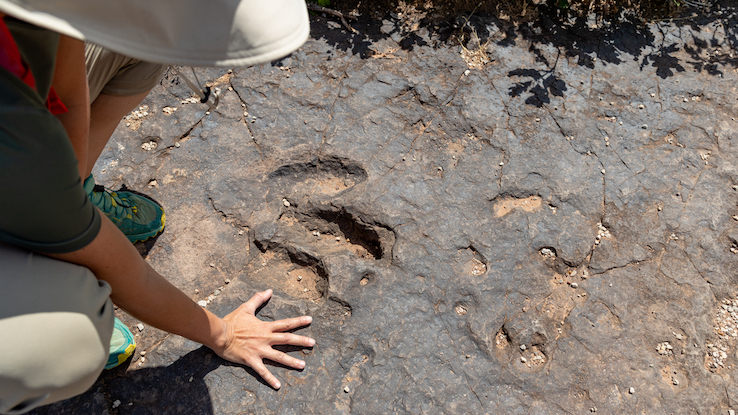Research on Dinosaurs’ Extinction Shows Links to Climate Change

It has been a long-standing debate among scientists: What really caused the extinction of dinosaurs? The widely known theory is that a giant asteroid the size of a mountain collided with Earth 65 million years ago. The asteroid went on to wipe out dinosaurs, as well as 70% of Earth’s species. But, research is now suggesting that the asteroid alone likely didn’t lead to the dinosaurs’ demise.
According to a study published in the journal Proceedings of the National Academy of Sciences, there’s a significant correlation between changes in climate and dinosaur extinction. This research could have far-reaching implications for our understanding of climate change and its effects on animal populations.
We’ll explore the theory of why the dinosaurs are extinct and also look at the asteroid impact theory and whether, according to new research on dinosaurs, climate change wiped out these massive creatures.
Death From Above: Why Are the Dinosaurs Extinct?
Scientists believe a 6-mile-wide asteroid collided with Mexico’s Yucatan Peninsula coast, resulting in the 110-mile-wide Chicxulub crater. The hit created a chain reaction of natural disasters spanning thousands of miles, including fires, tsunamis and earthquakes. For many years, lethal gas, dust and soot clogged the atmosphere, shutting out the sunlight and preventing plant photosynthesis. And while some animal species survived the aftermath, three-quarters of Earth’s species, including dinosaurs, were wiped out.
Recent research findings have uncovered hard evidence tying dinosaur extinction to climate change, particularly climatic cooling. On March 21, 2022, a study published in the journal Proceedings of the National Academy of Sciences suggested that climate change may have played a role in the extinction of Earth’s species.

According to experts Christopher K. Junium and Aubrey L. Zerkle, lethal vaporized pebbles from the asteroid’s impact at Chicxulub may have flooded the atmosphere, generating sulfate aerosols, which are sulfuric gasses. These sulfuric fumes deflect sunlight, resulting in global cooling and a post-asteroid “winter.”
How Sulfate Aerosols Could Have Caused Mass Extinction
Before the 2022 study by Christopher K. Junium and Aubrey L. Zerkle on sulfate aerosols’ impact on climate change, scientists theorized that the high sulfur components of the Yucatan bedrock likely had an impact on climate change. The only caveat was uncertainties around the quantity and degree to which high sulphuric gasses in the atmosphere would contribute to the kind of climatic impact warranting a large-scale extinction event.
Without a doubt, the initial asteroid impact would cause lethal natural disasters like tsunamis, earthquakes and fires. Soot would also block out the sun, cutting off plant photosynthesis. However, high sulfuric gasses would cause longer-term climate change events. Given that the aftermath would cause many years of freezing temperatures and acidic rain, it’s probable that many species that survived the initial impact would face subsequent extinction.
Many scientists have agreed with this notion. However, without reliable proof, it has been impossible to confirm the influence of climate change on the survival of living forms.
According to the same study by Christopher K. Junium and Aubrey L. Zerkle, “Sulfate aerosols have long been implicated as a primary forcing agent of climate change and mass extinction in the aftermath of the end-Cretaceous Chicxulub bolide impact.”

According to most Scientists, the Chicxulub bedrock is rich in sulfur minerals like gypsum. Hence, most scientists theorize that the asteroid impact on the bedrock could have caused sulphuric gasses to fill the air. In fact, it seems the Chicxulub bedrock may have been the worst place for an asteroid to hit. Once it happened, vaporized rocks filled the air and broke down into deadly gasses, including sulfur aerosols.
However, these theories were simply just that — theories. Without concrete proof, there was no way to assert whether cooling temperatures and acidic rain may have caused a long-term climatic effect.
The New Findings About Sulfate Aerosols’ Impact on Global Mass Extinction
The 2022 study uncovered new hard evidence supporting climate change’s impact on the evolutionary processes. This new evidence shows that sulfate aerosols linked to the Chicxulub event filled the air. Further, the high quantity and Cretaceous-Paleogene period in which the atmosphere was filled with sulphuric gasses support a longer-term effect on climate change and a likely contributing catalyst to mass extinction.
Experts Junium and Zerkle analyzed Texas’ Brazos River site for palaeontological evidence within rock sediments. This riverbed is known to have remnants of the condensed vaporized rocks falling to the Earth roughly 800 miles from the asteroid’s impact. The isotopic signature showed sulfur exclusively found above the ozone layer and exposed to UV radiation.
Further, they used diagnostic signatures and statistical models to analyze stable isotopes of sulfur molecules. Junium noted that the rocks they studied had sulfur anomalies that could only be explained by chemical reactions high up in the stratosphere. These effects would continue for months to years after the impact. Given that these rocks were formed during the upper Cretaceous and lower Paleogene period when the asteroid impact would have occurred, they conclude that sulfur aerosols certainly played a role in effecting extreme climate change and the subsequent extinction of dinosaurs.

Why the Research on Dinosaurs Matters
Understanding the past helps prepare for what may happen in the future and possibly help prevent dire outcomes. Consequently, the research on dinosaurs has been a focus area for paleontologists to map out the deep geological past. This helps us understand the contributing factors to climate change and the resulting environmental impacts.
The new findings show that high sulfur content in the atmosphere could have caused dire effects ranging from extreme climatic changes to mass extinction of many of Earth’s species. The large-scale extinction also led to the evolution of Earth’s species, including human beings.
These new findings help assert the long-theorized nature of the dinosaurs’ extinction. And while the details of exactly how the environment changed remain elusive, the study helps us take a step closer to understanding the impact climate change has on the evolutionary processes of life.
Junium and Zerkle encourage other researchers to conduct more studies around the post-impact implications of the dinosaurs’ mass extinction — specifically, studies on how sulfur rock sediments from the mass extinction period implicate the environment and the post-asteroid era. When there are more studies linking climate change to dinosaurs’ extinction, we can better understand the sulfate aerosols’ impact on the environment and prepare for what the future may hold for us.





